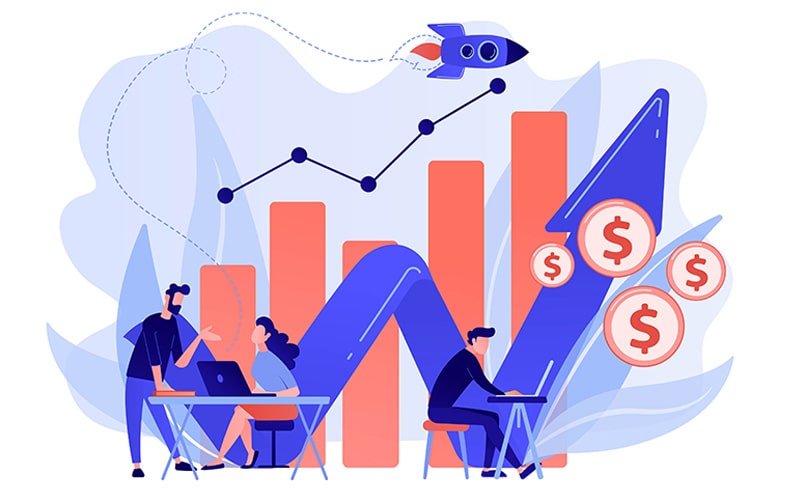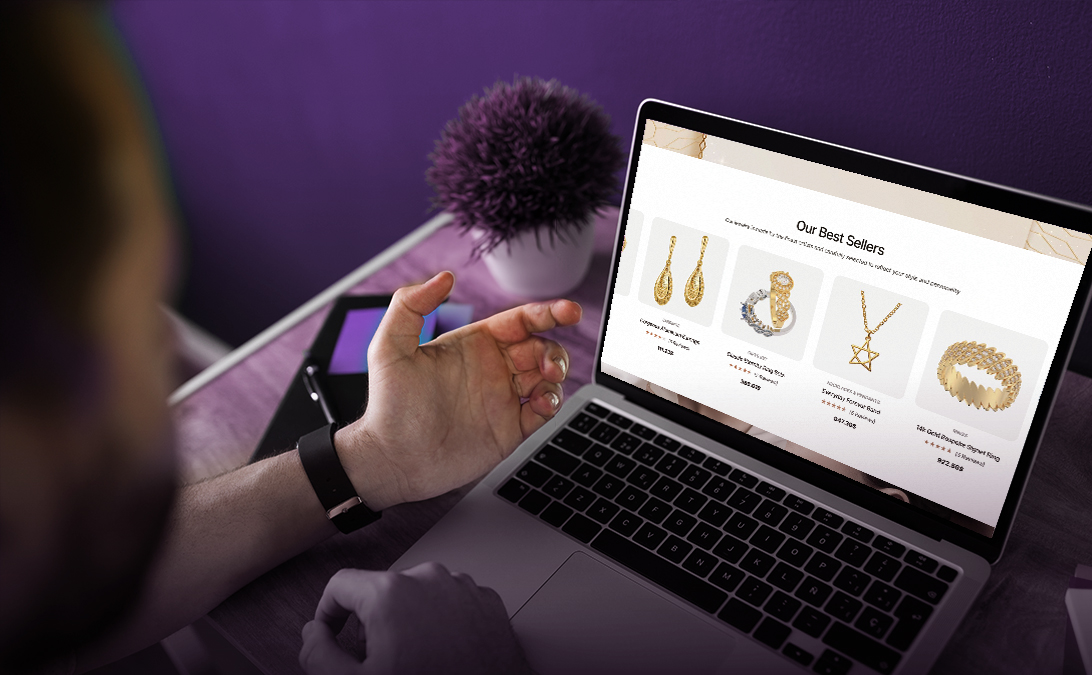
How to Increase Conversion Rates on your eCommerce Site
9 March 2022
If you’ve invested in an eCommerce website, you have products or services that you want to sell online. Just like setting up a physical retail space, there are several factors that can influence conversion rates. It’s not sufficient to have fantastic products and prices. The way your eCommerce store is designed to allow shoppers to easily navigate their way through your online shop and buy is crucial to ensure a good website conversion rate.
This blog will explain how to calculate your conversion rate, what a good average conversion rate is and then how to increase purchases amongst your web and mobile users.
What is a conversion rate?
A conversion is a desired action that you want your potential customers to take. This is typically a click on a button to making purchases and become paying customers. Websites and apps often have multiple conversion goals as users travel through an eCommerce store, and each will have its own conversion rate.
The conversion rate is the number of conversions divided by the total number of visitors. For example, if an eCommerce website receives 500 visitors in a month and has 100 sales, the conversion rate would be 100 divided by 500, or 20%.
Why tracking a conversion rate is important
Tracking conversion rates allows you to measure the performance of the web pages and apps of your eCommerce business. Understanding what percentage of your users are completing the agreed goals that drive your business to be successful allows you to identify areas for improvement on your store.
A higher conversion rate leads to more sales with the same amount of traffic which ultimately means your marketing spend becomes more efficient.
How to calculate your eCommerce conversion rate

Google Analytics is a must
Setting up Google Analytics is the first port of call when it comes to measuring your conversion rates. But a word of warning. It isn’t as easy as Google would have you believe. The conversion rate in Google Analytics is, at the highest level, simply the number of goals completed divided by the number of sessions.
Understand what you are measuring
What is important for you to do, in order to calculate the most accurate and meaningful eCommerce conversion rate, is to ensure you focus your measurement on your target audience, audience interest and device type, for starters. You should ensure your calculation doesn’t include visitors who you cannot sell to (perhaps in certain territories) or who bounce off the landing page without getting to your product pages. And you should make sure you can track conversion rates for desktop versus mobile so you can understand any improvements needed by device type.
What is a good average conversion rate?
Average UK conversion rate
According to IRP Commerce, the average UK conversion rate in January 2022 was 1.69%. Sounds incredibly low, doesn’t it? Bear in mind that this figure is across all industries, device types and traffic sources and is a huge amalgamation of different goals and online shopping competencies. It is also evident that many eCommerce businesses need to improve their user experience and overall digital strategies. The COVID-19 pandemic has also seen dramatic shifts in consumer behaviour and online purchasing expectations.
However, if only there was one version of the truth. Depending on how the conversion rate is measured, the average UK rate can be wildly different. Kibo‘s latest Ecommerce Quarterly Benchmarks Report states that the UK conversion rate in Q3 2021 was 4.1% across all devices and 6.4% on desktop. So take country-wide average conversion rates with a pinch of salt!
The importance of mobile
SaleCycle‘s tracking shows that in 2019 51.39% of fashion purchases were carried out on mobile devices with this figure likely to be much higher since the global pandemic. It is clear that mobile must be part of every eCommerce business’ online strategy whether B2C or B2B to achieve a good conversion rate.
Conversion rate by industry
There are many benchmarks comparing conversion rate by industry but essentially we would argue that they are meaningless. What’s more important is to understand the set of conversion rates that make more money for your specific business rather than assuming that your industry’s average conversion rates are your targets.
Why shoppers on eCommerce stores don’t convert
Before we show you ways to improve your conversion rate, let’s look at why shoppers on eCommerce stores don’t convert. Those reasons are no different to bricks and mortar retail outlets but some brands forget the basic principles when they build an online store.
Your shop window and layout
- Your site leaves a poor first impression. Remember how important the shop window is before you enter a store. The same applies to an eCommerce business.
- You don’t know your target audience. Your language, pictures, products and pricing are all influenced by your customers’ needs and behaviours.
- Your site isn’t optimised for your users to navigate through your online shop easily and logically. They don’t want to waste time and they will ultimately not trust your brand.
Your shop’s look and feel
- You’re ignoring mobile users who expect a mobile-enabled experience where shopping can be carried out on a small screen on the go.
- Your product images are poor and one-dimensional. Again, imagine how customers like to touch and experience products in physical stores and how you need to satisfy that behaviour online.
- Your copy isn’t persuasive and reassuring. The old days of a personalised service when you walk into a store have disappeared (apart from in boutique or luxury retailer outlets) and so your words play a major part in convincing shoppers to buy from you.
- The web pages are distracting or overwhelming. Visual presentation is key to keeping users in the buying journey. We read online pages differently to pages in books and magazines and the layout needs to recognise this. And consumers pick and choose what they read so content should be presented in a hierarchy of priority.
Your sale’s technique
- The call to action is unclear or not persuasive. For a good conversion rate, your CTA button needs to fight for attention and encourage potential buyers to move to the next steps. That might be achieved by offering a time-sensitive deal.
Your brand trust
- Shoppers don’t trust your brand. Online shoppers are generally savvy and disloyal but if they trust your brand, they are more likely to buy from you than your competitors’ eCommerce stores. Make sure all your website pages and advertising are consistent, clear and easy to understand. Don’t have any hidden costs. Be completely transparent and they will buy again.
Your shop’s checkout
- Buyers have to pay for shipping. Amazon Prime is successful because shoppers believe they are getting a better deal by saving on delivery. Make sure your competitors are not offering free shipping by front-loading the product’s price. The average order value is likely to increase if you offer deals.
- Check out is difficult. Just like having to queue for ages in a shop and then experiencing a slow transaction at the till, online shoppers want to buy quickly and easily once the decision is made. So make sure you have the option to checkout as a guest and a choice of payment options as well as a familiar payment gateway solution.
- You’re not using exit-intent to detect when a visitor moves their cursor above the browser window. A popup at the exact moment a visitor is about to leave your site can persuade them to stay and buy.
Your re-marketing
- There’s no re-marketing or retargeting strategy in place. By understanding your traffic source, you can nudge prospects to return to your site to complete their purchase.
How to increase your eCommerce conversion rates

So now let’s look at how to improve your conversions, without necessarily increasing your unique visitors, for both desktop and mobile devices. These tips are relevant to different industries and whether your focus is B2C or B2B. Most businesses that are selling online will need to ensure they address these issues to benefit from a good conversion rate and a lower cost per acquisition.
Focus on mobile usability
Ensure your e Commerce platform is mobile responsive as most consumers, whatever the product or service, are researching, if not buying, on a mobile device. Your competitors will win over your customers if your eCommerce solution does not recognise the importance of mobile users.
Create interactive product pages
Engaging in a product online can make the difference between a sale or an abandoned cart. Despite not being able to physically touch products, your users will want to see a 360˚ view, watch a video, see how the product looks on another person (if clothing) or even virtually try it on or experience it.
Design simple navigation
Your conversion rate will dramatically increase if your eCommerce site has an easy, even pleasurable, user experience. If there are any sticking points along the way, your users are likely to abandon the page and go elsewhere.
Use social proof to increase conversion rate
There are tried and tested eCommerce designs that consumers like and are familiar with. Stick to those designs rather than recreating the wheel. And add testimonials and reviews from like-minded people to validate your brand and products.
Personalisation is key
Your unique visitors are just that. Unique. And there is a growing expectation amongst internet users that their online experience should be personalised. The Amazon technique of ‘People who buy this product also bought these’ is a good starting point to raise the conversion rate.
Provide free shipping
Conversions in online baskets will rise if you offer free delivery for a higher spend. Consumers love a good deal and you will see the conversion rate soar if they can save on shipping costs.
Add a clear return policy
Online shoppers, irrespective of the traffic source, will be more likely to buy if they can trust you to offer a simple return policy within a certain time period if they change their mind. It demonstrates that you strive for 100% customer satisfaction and aren’t a rogue trader.
Have a re-marketing strategy
Sometimes your potential customers need a bit of a nudge to make the decision to buy from you. Many will visit your site, and a few might even have a full basket, but will do more research elsewhere to compare prices, products and brands. Make sure your eCommerce platform is built to capture who they are so you can remind them of the benefits of buying from you. Also, ensure you have an organic presence to remind them of your brand whilst they are researching.
Reduce cart abandonment
Consider all the reasons why a user has gone through your online journey, spent time selecting products, put them in their cart and then left your shop. Are your choice of payment methods sufficient? Are you imposing a registration process before purchase that is putting people off buying? A guest checkout option really helps to increase purchases. They are very warm leads so focus on improving your conversion rate at this point in the journey first.
Test and test again
Even the smallest change, such as a button colour or size, can make a difference to your conversion rate. Having the facility to carry out A/B testing is the perfect way to ensure robust testing with results you can trust. Try different messages, colours, offers, content, online advice etc and your average rate will eventually increase.
Key takeaways
Knowing how to accurately measure your conversion rate at each step of your purchasing journey is the first essential strategy to put in place. Google Analytics, a free tool to help you achieve this, should be embedded into your eCommerce store.
Accepting the fact that most website visitors will not buy straight way if at all, will ensure you focus on the parts of your eCommerce store where you can make a positive impact on conversion rates. Also, being mindful of the average rate of conversion for your industry is interesting but not necessarily useful. Focus on the conversion rate that works for your business and ensures your marketing spend efficiency is maximised.
On the face of it, improving the conversion rate seems a difficult, never-ending task. Every industry is different. Unique visitors expect to be treated as individuals. There are multiple reasons, big and small, why your conversion rate might be poor. But thankfully, there are some fundamental design and UX tricks that can improve your conversion rate quickly.
In short, here’s nine principles to follow that will ensure a conversion rate that is the envy of your competitors:
- Always put your customers at ease
- Reassure them with the use of testimonials and reviews
- Use content that they understand
- Create a strong sense of urgency
- Give them all information they need to make a decision without overwhelming them
- Experiment with exit-intent popups
- Leverage social sharing
- Ensure your site is mobile friendly
- Turn one-time shoppers into loyal customers
How can we help?
chilliapple has been supporting eCommerce clients, whether their websites are built on Magento, PrestaShop or WooCommerce, since 2008 to design, build and maintain their online businesses. Our experienced developers understand how every part of a website will influence the conversion rate and ultimately the profitability of a digital brand.
chilliapple aims to cut out unnecessary jargon and time-wasting and focus on delivering web and app development projects on time, on spec and on budget. Our highly skilled developers are only available through chilliapple. Full stop.




